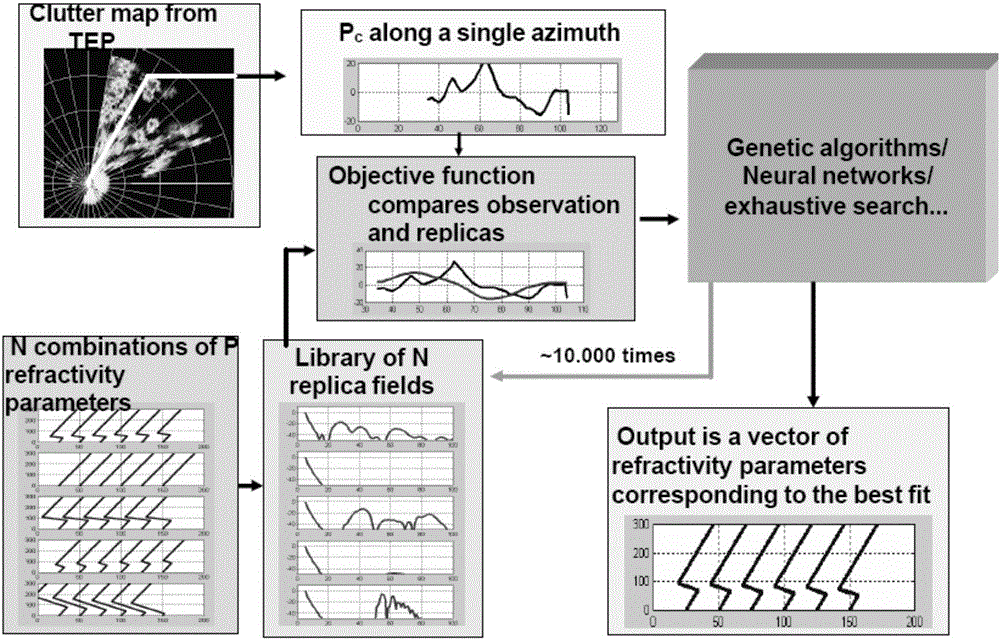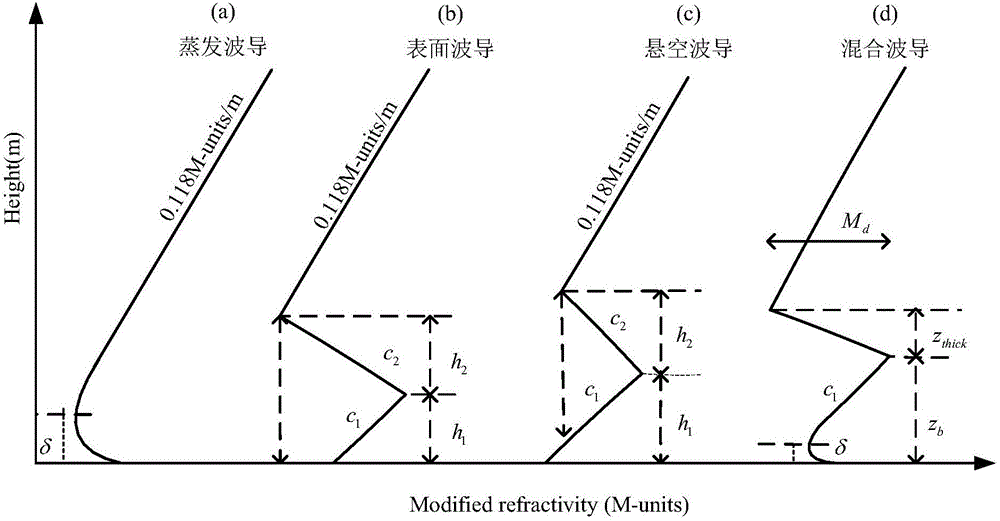Method of inversing atmospheric duct by radar echo through LPSO algorithm
A technology of radar echo and atmospheric waveguide, applied in the directions of utilizing re-radiation, radio wave reflection/re-radiation, calculation, etc., can solve the complexity, and the research of RFC has not ended here.
- Summary
- Abstract
- Description
- Claims
- Application Information
AI Technical Summary
Problems solved by technology
Method used
Image
Examples
Embodiment Construction
[0064] According to a method for inverting the atmospheric waveguide from the radar echo by using the LPSO algorithm proposed in the present invention, a certain experiment data is taken as an example for analysis. Based on the known radar echo data, the radar echo power at a specific direction angle is selected and a parametric empirical model of atmospheric ducts. According to the parametric model, calculate u(x,z) in the parabolic equation (PE), then determine the pattern propagation factor F(x,z), and finally calculate the one-way propagation loss value L(x,z) on the propagation path z). It can be known from the simplified formula of radar echo power that the one-way propagation loss value L(x,z) and the normalized scattering coefficient σ 0 Determines the radar echo power. Therefore, the calculated one-way propagation loss L(x,z) and the measured normalized scattering coefficient σ 0 Obtain the radar echo power p c . Using the measured radar echo power and simulate...
PUM
 Login to View More
Login to View More Abstract
Description
Claims
Application Information
 Login to View More
Login to View More - R&D
- Intellectual Property
- Life Sciences
- Materials
- Tech Scout
- Unparalleled Data Quality
- Higher Quality Content
- 60% Fewer Hallucinations
Browse by: Latest US Patents, China's latest patents, Technical Efficacy Thesaurus, Application Domain, Technology Topic, Popular Technical Reports.
© 2025 PatSnap. All rights reserved.Legal|Privacy policy|Modern Slavery Act Transparency Statement|Sitemap|About US| Contact US: help@patsnap.com



